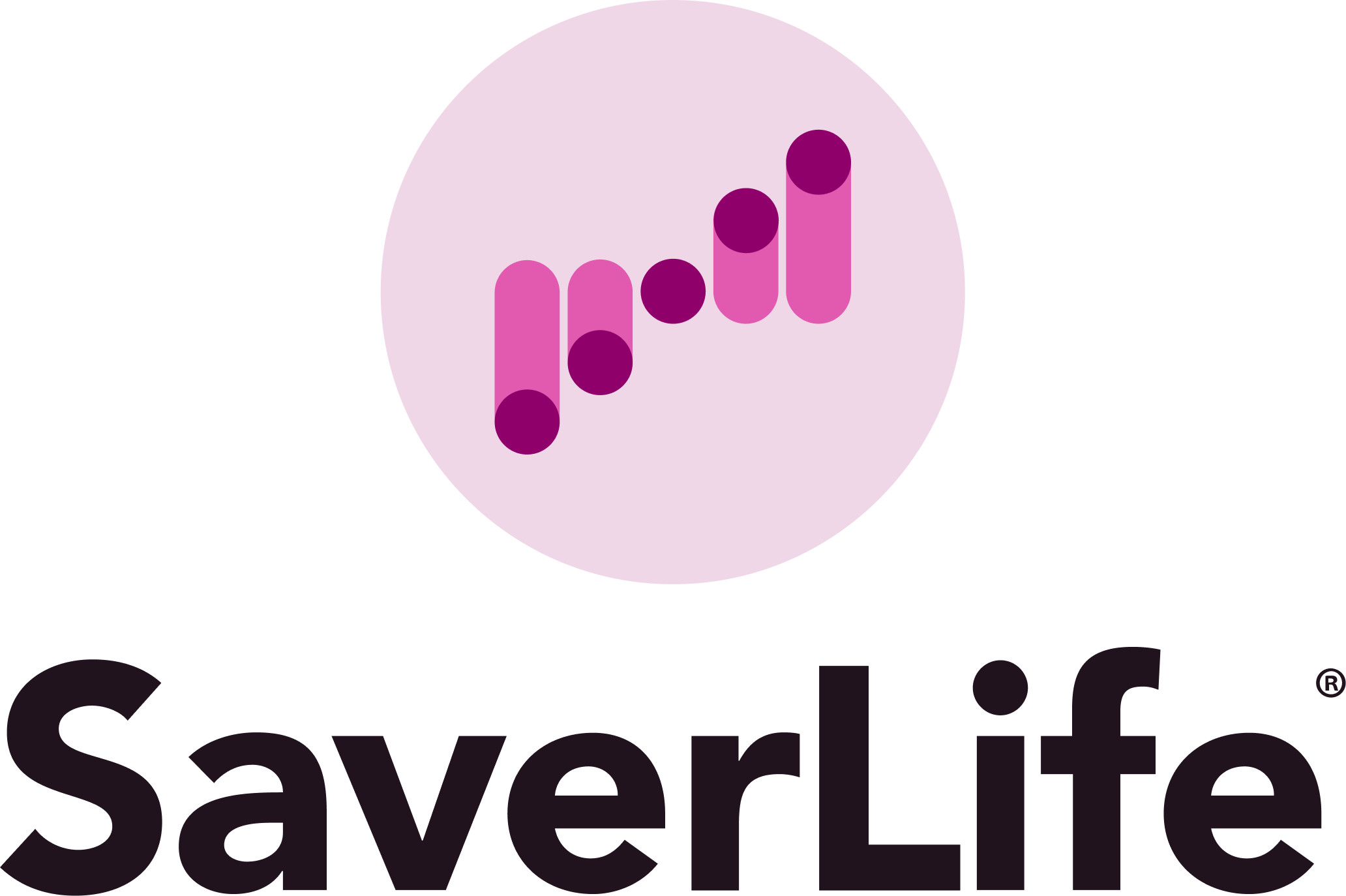Why is Saving Money So Hard?

These days, many Americans find it exceedingly difficult to save money. In fact, the average American socks away less than 6% of their income. But why is it so difficult for us to stash our cash?
Today we are going to explore why it’s so hard to save money and how you can overcome 6 common savings obstacles.
Let’s dive in!
6 reasons why saving money is so hard
1. Untapped money habits
Everyone has room to sharpen their spending decisions and savings habits. Learning and practicing effective savings tactics can level up your savings game.
The first step is identifying imperfect habits. For example, using credit cards to pay for things you can’t afford isn’t a good financial habit. You’ll incur substantial interest charges if you do this constantly over the years. When you’re shelling out fees this outrageous, it’s next to impossible to save money.
And these habits worsen when you don’t tackle them head-on. This results in a downward spiral that could detract from your quality of life. Partly because it becomes increasingly difficult to break the cycle of existing paycheck to paycheck or relying on credit cards to get yourself out of financial jams.
To get out of this rut, ask yourself questions every time you’re about to reach for your credit card. That way, you take an unconscious habit and make it conscious. You could ask yourself the following two questions: “Do I really need what I’m about to buy? Why am I putting this on a credit card when I can’t afford to buy it outright?”
There are a dizzying array of internet resources that can help you develop better financial habits. One of the best ones is SaverLife.
Budgeting
If you want to develop impeccable savings habits, you must create a budget you can stick to. Start by jotting down all your fixed expenses, such as your mortgage or rent, electricity, food, and car insurance. This gives you the amount you need to live on each month.
Decide how much you want to save. Let’s say you earn $4,500 after taxes. After accounting for fixed expenses of $2,500, you’ll have $2,000 left. An excellent guideline is to save 10% of your income, or $450.
Emergency fund
You should also create an emergency fund. Almost 50% of Americans wouldn’t be able to handle a sudden expense of $400 or more. If you’re in this category, you need to take yourself out of it by establishing an emergency fund.
Set aside at least $1,000 in the beginning. This could provide a little financial cushion against run-of-the-mill troubles, such as automobile problems or a broken fridge. Once you’ve gotten this taken care of, increase the size of your emergency fund to at least six months of fixed expenses.
Tracking expenses
You’ll also need to track your spending so you can stick to your budget.
For many of us, it can feel like we don’t even know where all our money goes. It seems to disappear as quickly as we get it.
The key to financial awareness is tracking expenses. By relentlessly tracking money going in and money going out, you’ll see where all your leaks are and be in a better position to save money.
2. Psychology
They call it “retail therapy” because when you purchase something, your brain releases endorphins and dopamine that make you feel happier. Some people even struggle with spending money solely to release endorphins.
Compulsive spending can interfere with your ability to save money. It can also cause you to incur massive debt, destroy your relationships, and make you feel hopeless about your life situation.
So how do you curb something like brain chemistry?
Frequently, merely becoming more conscious of this tendency helps replace mindless consumerism with more enlightened spending habits. For example, knowing that you’re making impulse purchases because you’re feeling emotional or angry.
If mindfulness doesn’t help, you might need professional treatment that addresses the underlying emotions that feed the spending compulsion.
Like any other addiction, compulsive spending intensifies over time. Sufferers then need to spend increasingly higher amounts of cash to get the same high they once experienced with a single purchase.
Cognitive-behavioral therapy can be beneficial because it helps identify and correct dysfunctional thoughts while tackling the behaviors these thoughts trigger.
Some compulsive spenders find 12-step programs such as Debtors Anonymous helpful.
3. Identify what you can change
For many Americans, there are significant social and economic factors that make saving feel impossible.
While we have zero control over external factors, when we focus on what we can change, we gain the power to succeed in spite of external factors.
If you want to regain financial control of your life, make two lists. On the first list, write down all the external factors preventing you from saving money. Label that first list “Things Outside My Control.” Make a second list of what you can do to accomplish what you want—even if external factors are still getting in the way, to a certain extent. Call this list “Take Charge Of My Financial Life.”
For example:
- Save $25 from your next paycheck
- Have $50 a month automatically deposited into your savings account
- Fix your old bike instead of buying an expensive new one
- Reward yourself with a picnic in the park when you don’t dine out this week
Any time you’re tempted to peek at the external factors, look at the list of things you have control over and do at least one of the actions. As you do stuff from the second list, the items on the first list will become increasingly irrelevant.
4. Your area’s cost of living is exceptionally high
Sometimes, a sky-high cost of living can put a massive roadblock in your efforts to save money—no matter how hard you try. For example, the average rent in San Francisco is $4,060 in 2022, and this is a lot of cash to shell out each month—even for high earners.
Because financial gurus say you should be earning more than three times your monthly rent, you’d have to make $12,180 a month to afford to live in the City by the Bay. If you don’t make enough to cover the rent in a place you’d like to live, try to find a cheaper area that’s still relatively nearby.
For example, if you work in San Francisco, consider finding an apartment in Vallejo, where rents tend to be cheaper. You could also get a roommate.
5. You don’t earn enough money
If your income isn’t enough to pay for living expenses, having cash in the bank can be challenging to the nth degree. Whether you want to have a solid emergency fund, save for a vacation, or have money for your kid’s college, you need to have enough of a financial cushion to transform your dreams into glorious realities.
If you’ve already slashed your monetary needs to the bare minimum and still struggle, it might be time to boost your income. You could do that by asking for a raise, retraining in a field with higher pay, or starting a side hustle.
Supplement your income with our SaverPerks. Earn extra cash on your own schedule in one-time, part-time and full-time jobs in a variety of industries. Sign up for SaverLife today and start earning with our SaverPerks.
6. You don’t have long-term savings goals
Not having long-term financial goals makes it difficult to save money but easy to squander your cash away on expensive spa visits, costly gadgets you don’t need, and “bargains” that aren’t really bargains.
When you have goals to save for things like a brand-new car to replace your worn-out jalopy, socking away money, while still somewhat challenging, becomes easier. You won’t mind cutting back on unnecessary expenses and will be more motivated to replace self-sabotaging financial habits with better ones.
Typically, any financial goal you want to attain within five years or more is a long-term savings goal. The most common is saving for retirement, but there are others too. For example, saving for your first home or your daughter’s education.
Because you don’t have an immediate need for the money with long-term savings goals, you should consider putting it in stocks and other investment vehicles. That way, you can counteract the effects of inflation while saving for your future.
Make saving money easier with SaverLife
Saving money doesn’t have to be difficult. It mainly requires you to take a long, close look at your financial habits so you can see how you’re unconsciously frittering money away on unnecessary things.
If you need some help in this department, take SaverLife out for a test spin! We’re a nationwide 501(c)3 nonprofit with a mission to help everybody develop good savings habits. Rack up points as you learn money management. Then, redeem all the points you earned for the opportunity to win cash rewards.
Start your journey to better financial habits today!

SaverLife is a nonprofit organization dedicated to helping people improve their financial health. Through savings challenges, personalized tips, and trusted resources, we empower people to build stronger financial futures.
